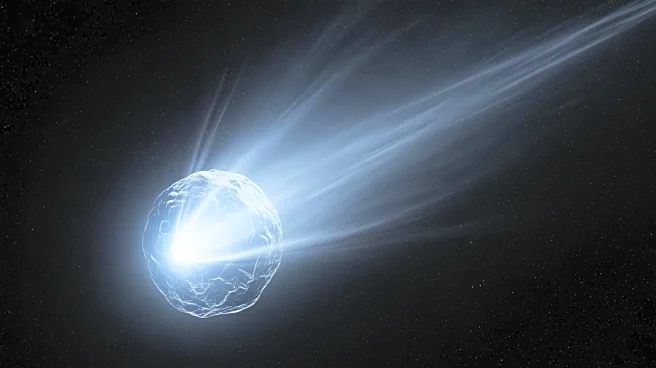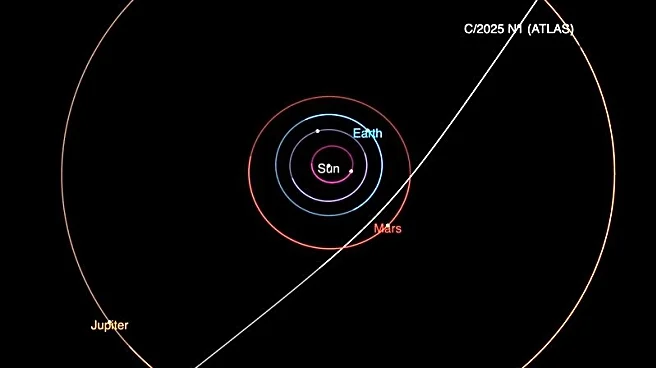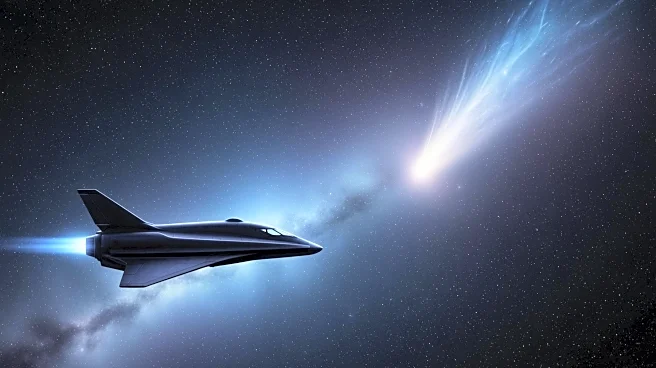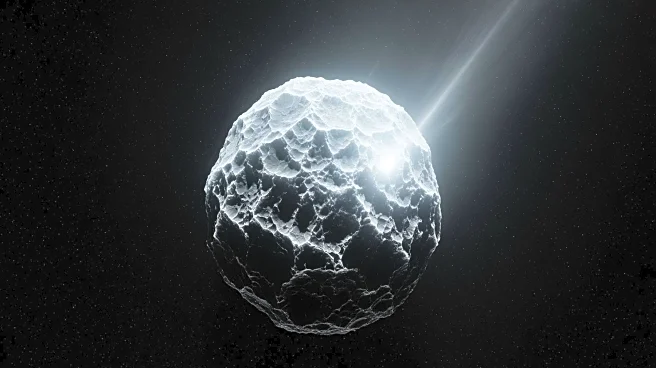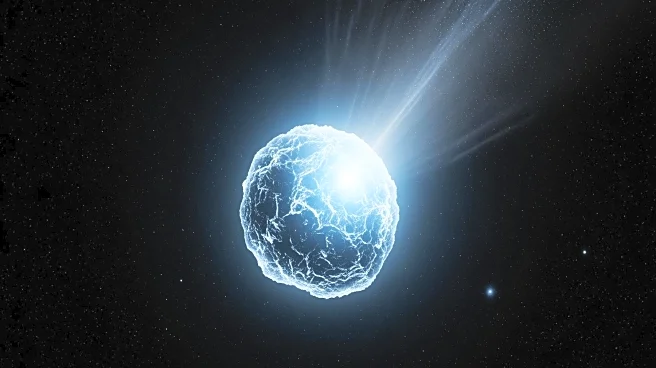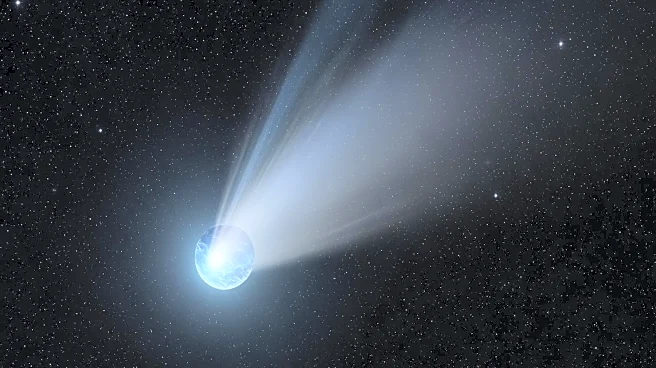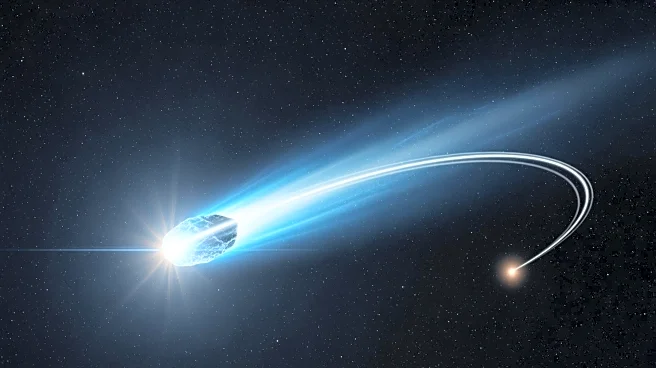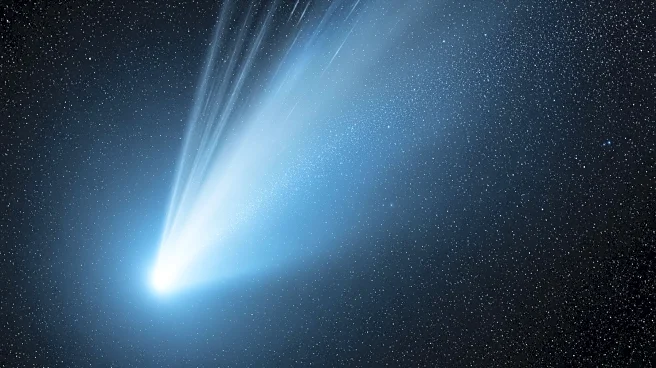What's Happening?
NASA has unveiled a new collection of images and data of interstellar comet 3I/ATLAS, the third known visitor from beyond our solar system. The release aims to dispel online speculation that the comet might
be an alien spacecraft. Observations were gathered from a network of spacecraft around Mars, near the Sun, and deep in space, along with powerful telescopes. Comet 3I/ATLAS, designated C/2025 N1 ATLAS, is notable for its hyperbolic trajectory, indicating it is not gravitationally bound to the Sun and is passing through from another star system. Hubble observations suggest the comet's nucleus is between 440 meters and 5.6 kilometers wide. The comet will not pose any threat to Earth, as it will come no closer than 170 million miles from the planet.
Why It's Important?
The release of images and data from NASA provides valuable insights into interstellar objects, which are rare and offer a unique opportunity to study material from outside our solar system. Understanding the composition and behavior of 3I/ATLAS can help scientists learn more about the formation and evolution of planetary systems. Additionally, the observations serve as a rehearsal for planetary defense techniques, improving the accuracy of predicting the paths of such objects. The dismissal of alien spacecraft theories by NASA underscores the importance of scientific evidence in countering misinformation.
What's Next?
NASA and other space agencies will continue to analyze the data collected from various missions and observatories. The comet's trajectory and composition will be studied further to compare with other interstellar objects like 1I/ʻOumuamua and 2I/Borisov. Future missions, such as NEOMIR and Comet Interceptor, will build on the lessons learned from 3I/ATLAS to enhance planetary defense capabilities. As the comet moves away from the Sun, it will be monitored until it exits the solar system, providing ongoing opportunities for scientific discovery.
Beyond the Headlines
The study of 3I/ATLAS contributes to the broader understanding of interstellar chemistry and the potential similarities between our solar system and others. The comet's composition, rich in carbon dioxide and other volatiles, offers clues about the building blocks of planetary systems. The event highlights the collaborative efforts of international space agencies in advancing planetary science and defense strategies.
